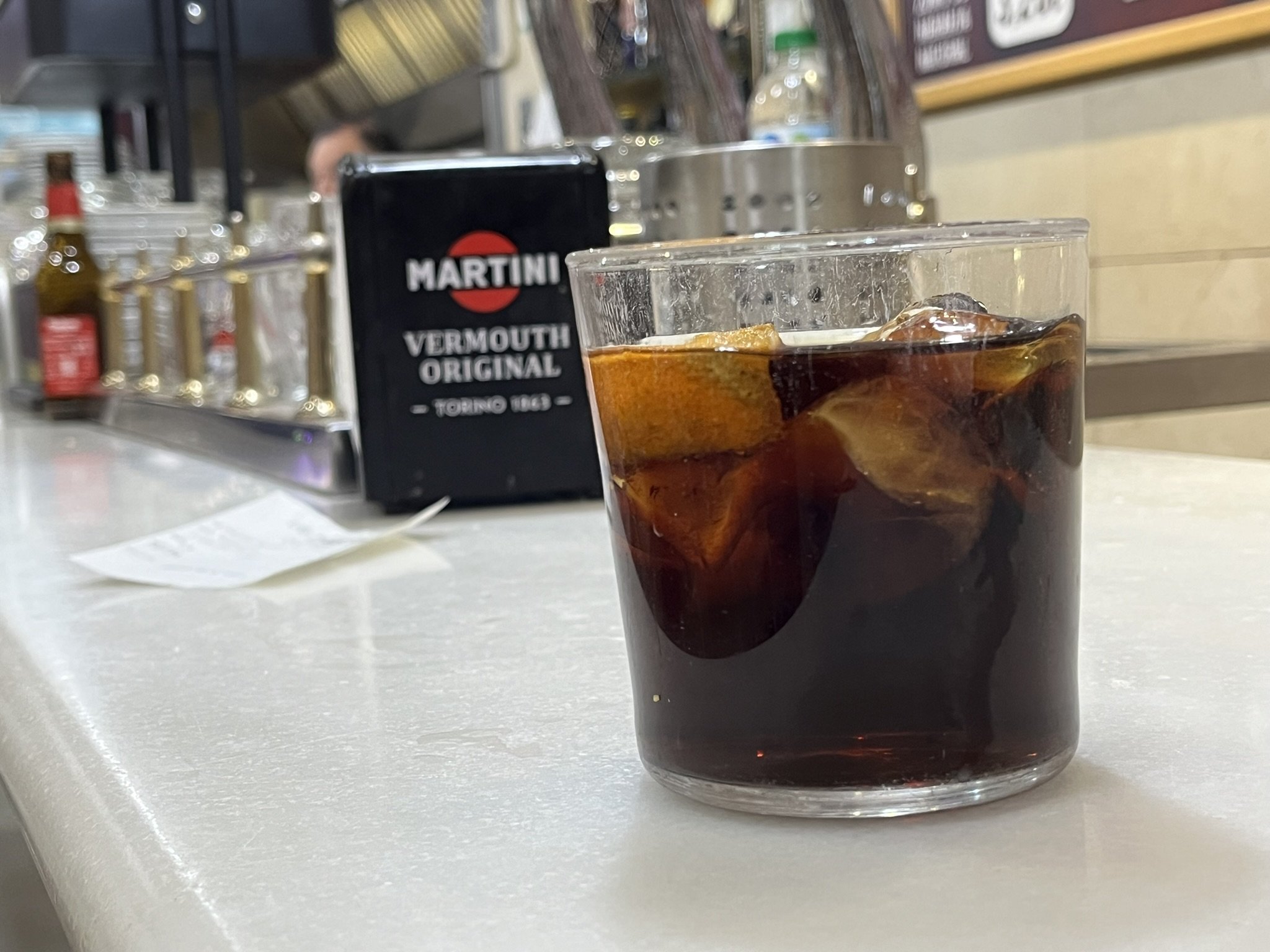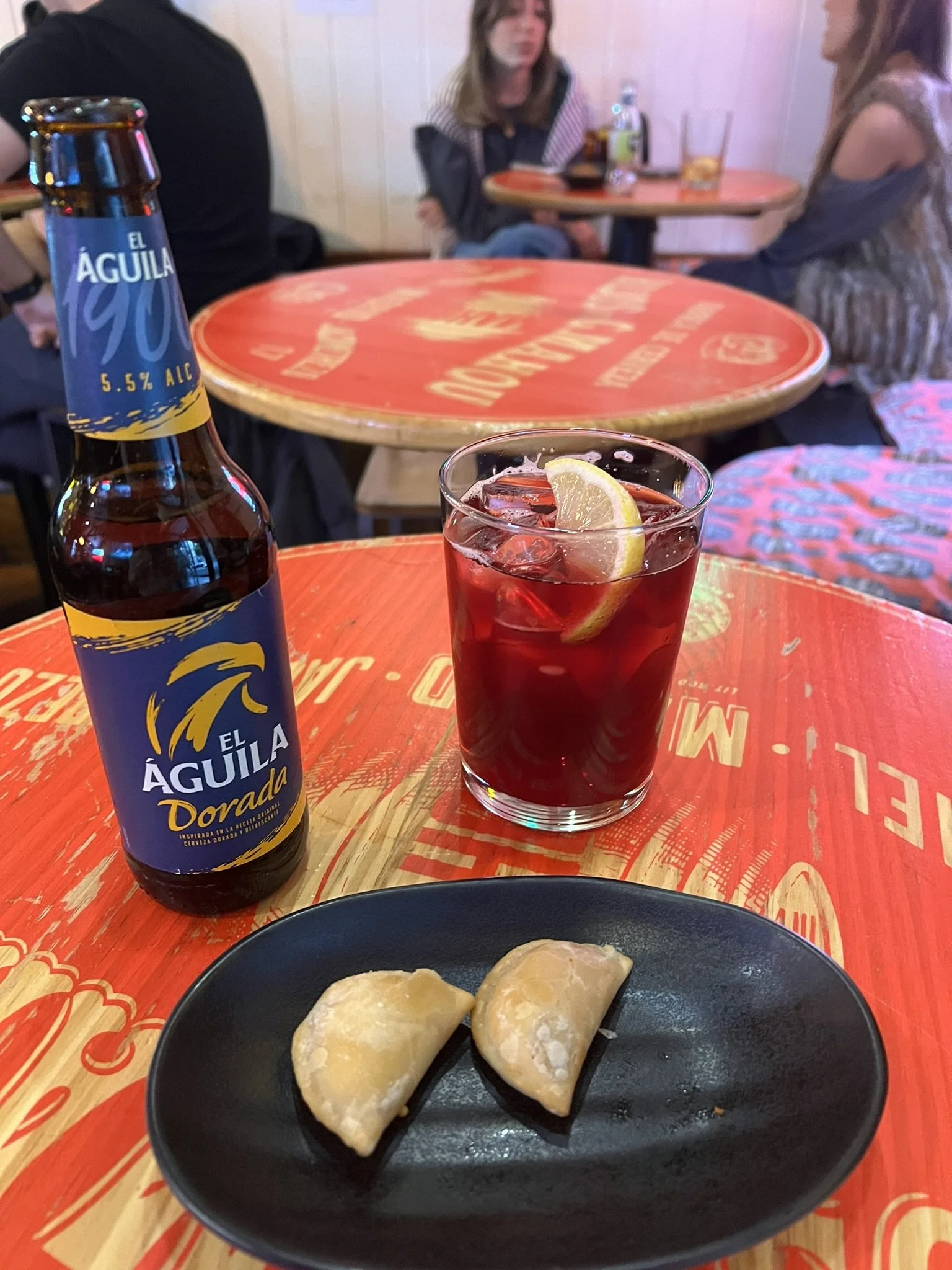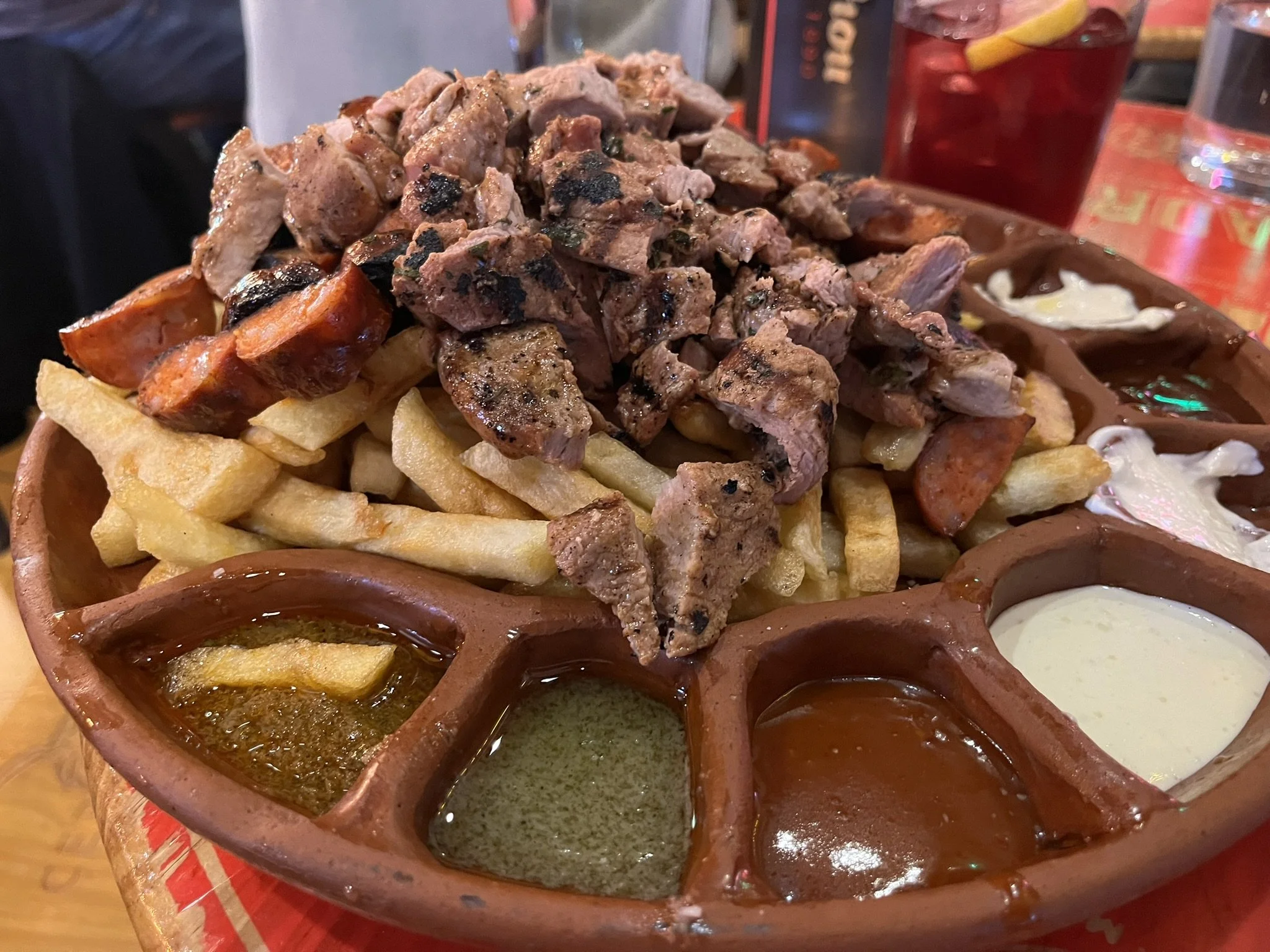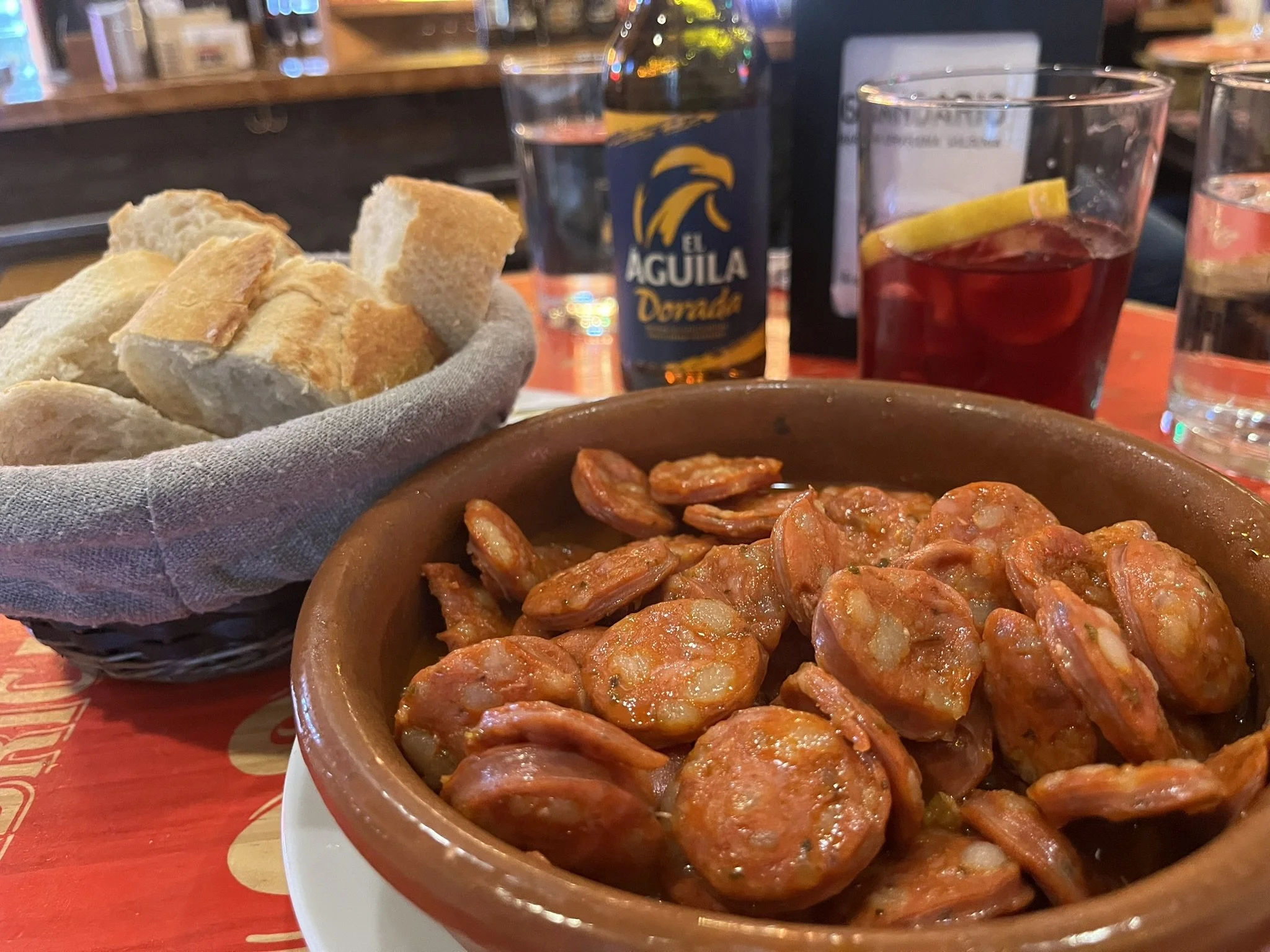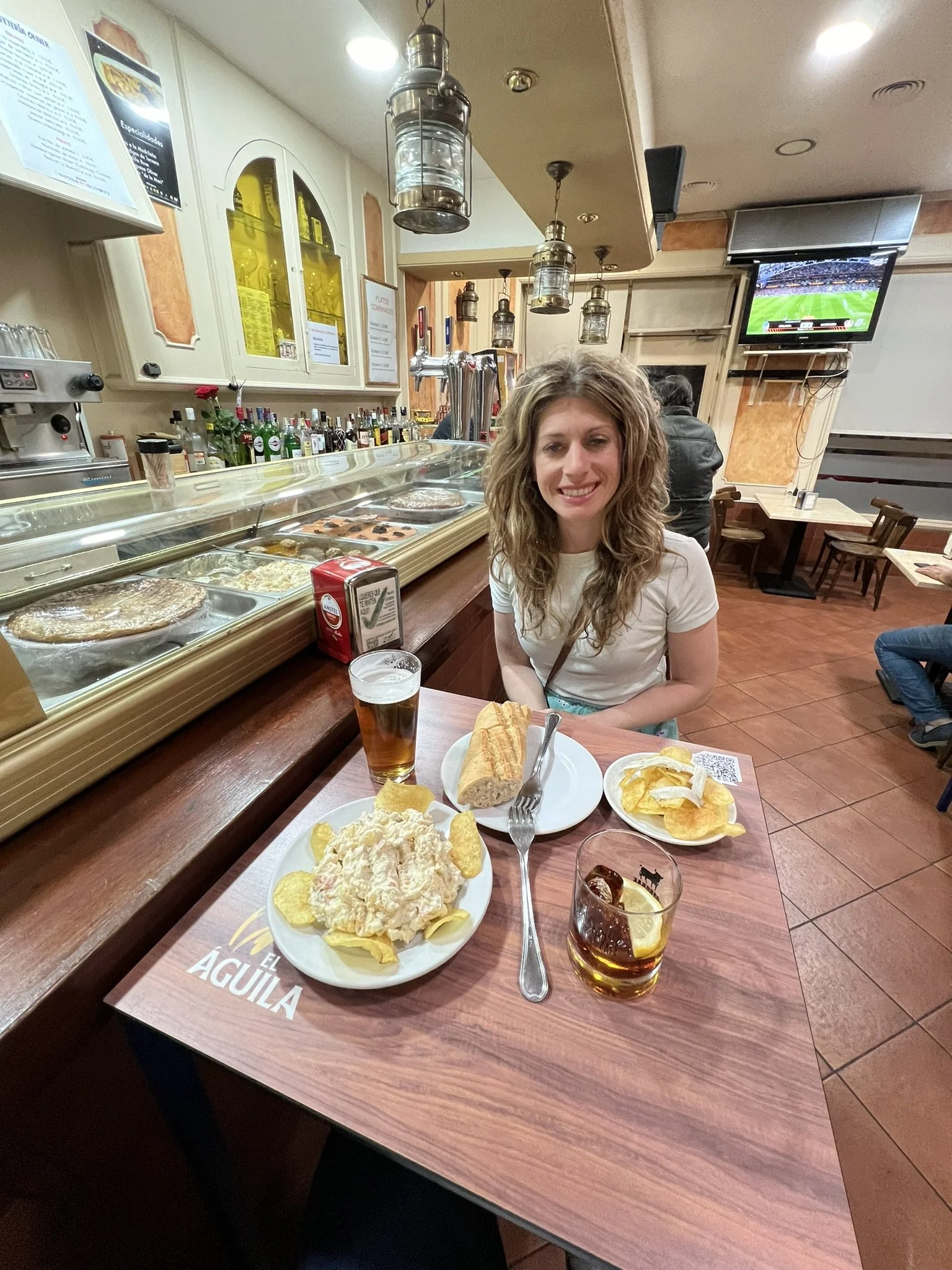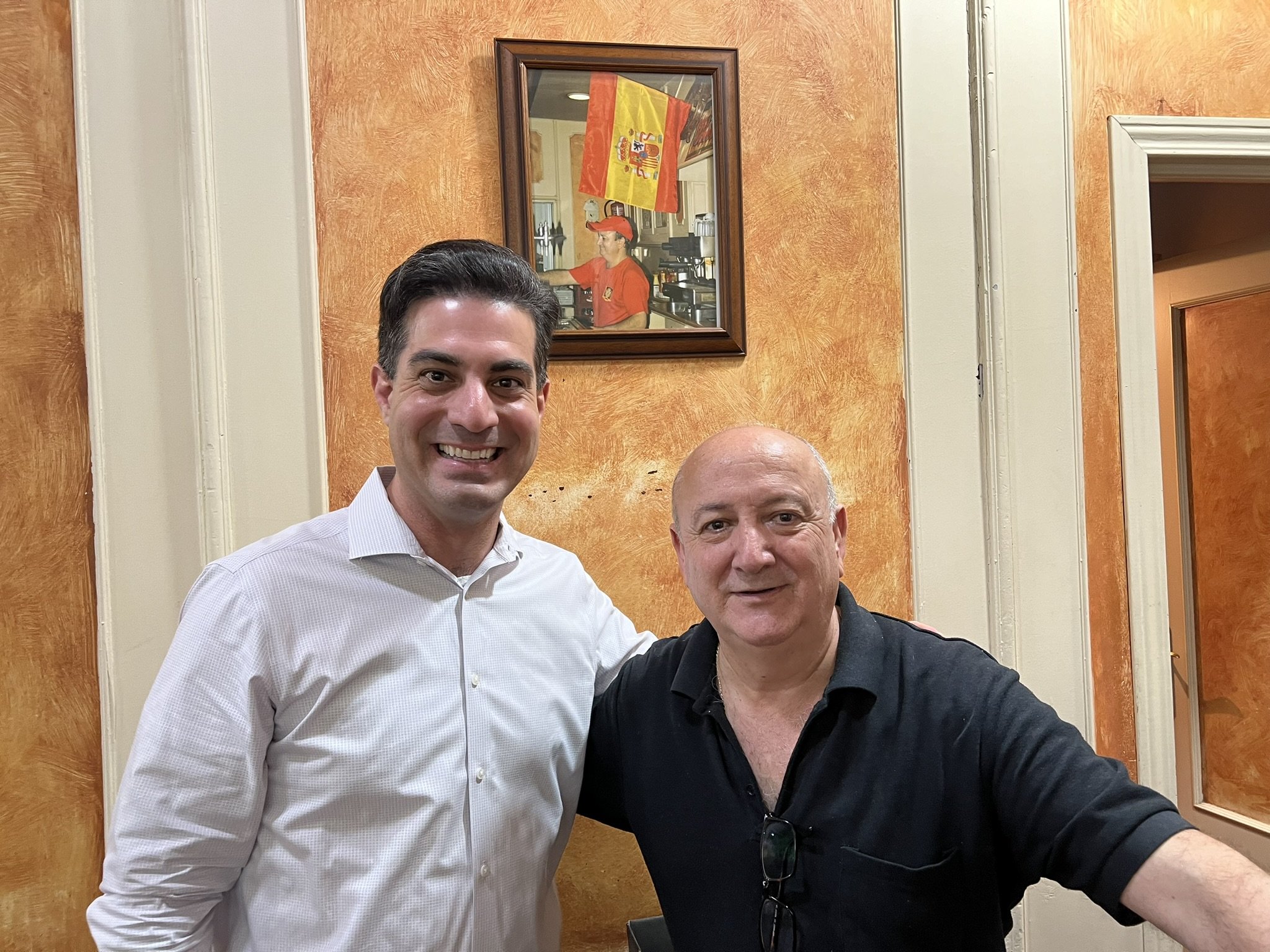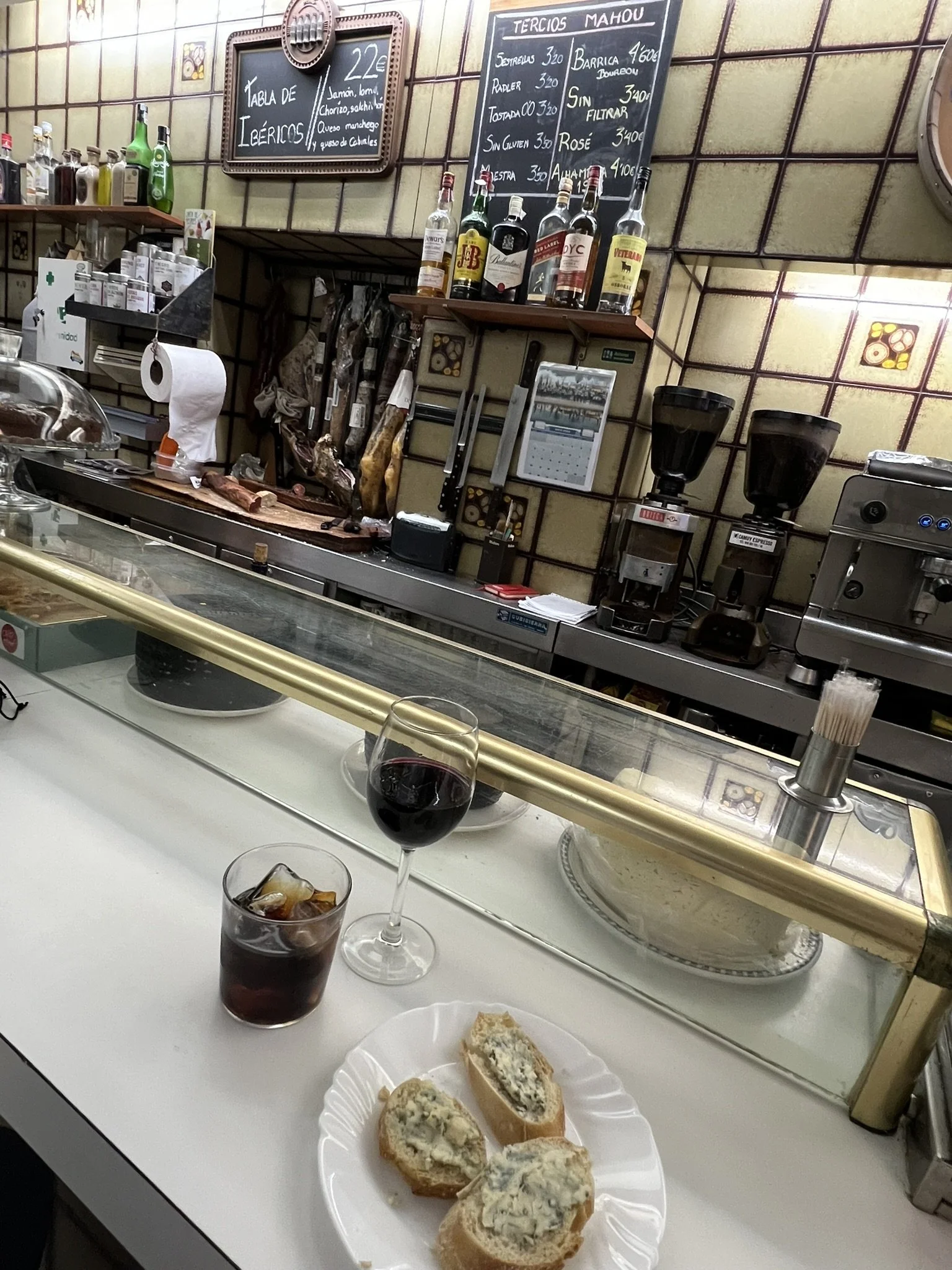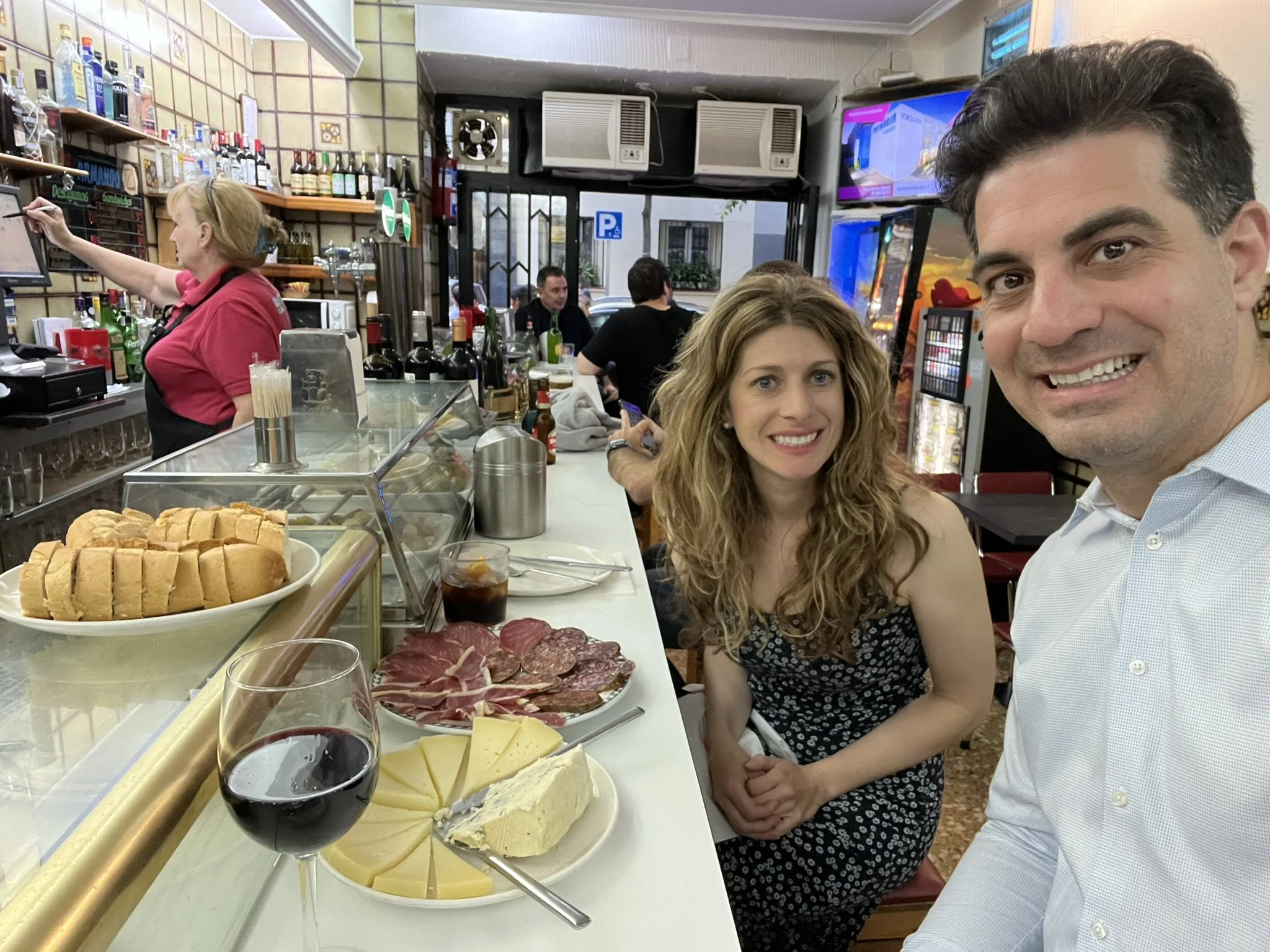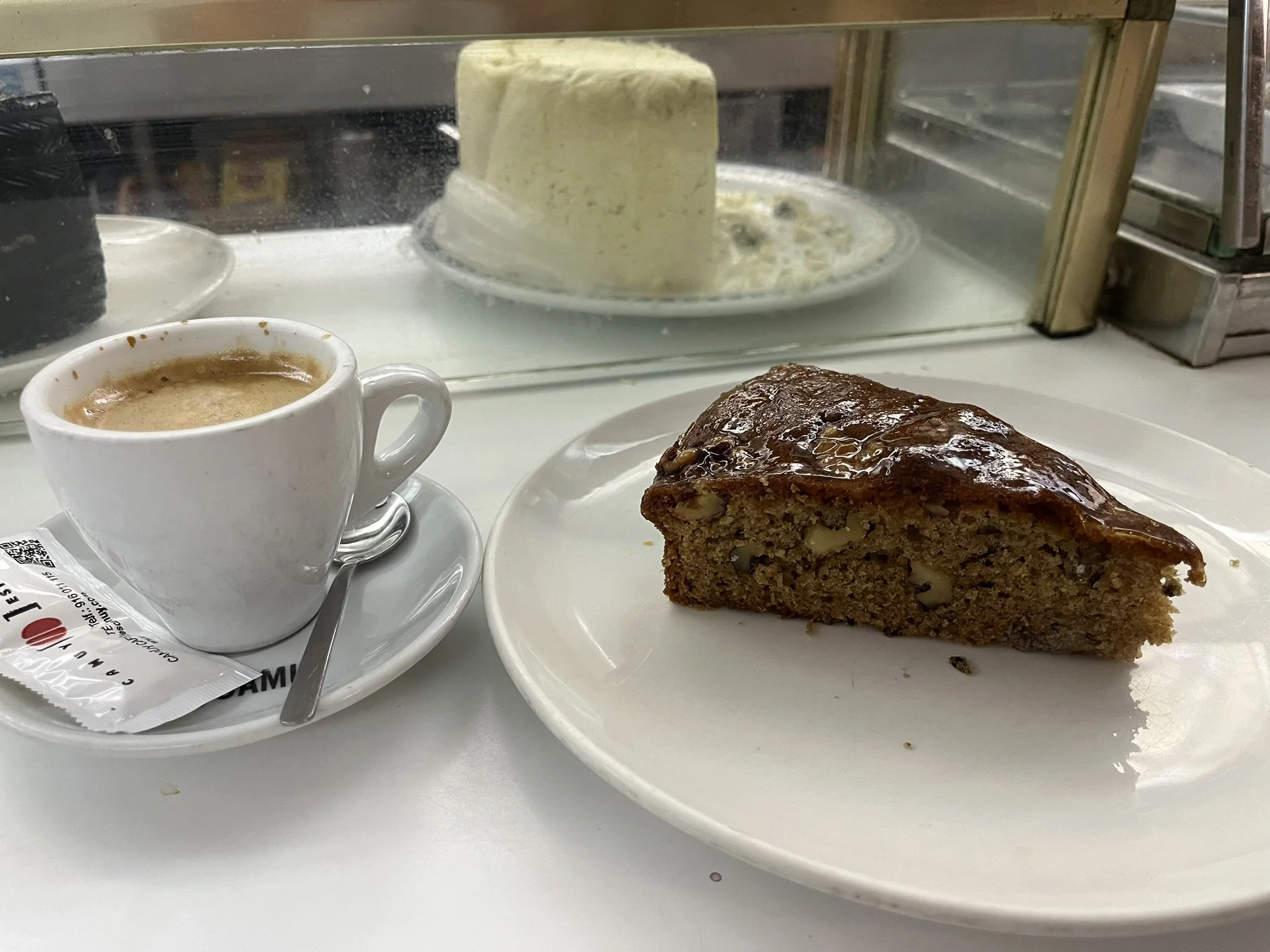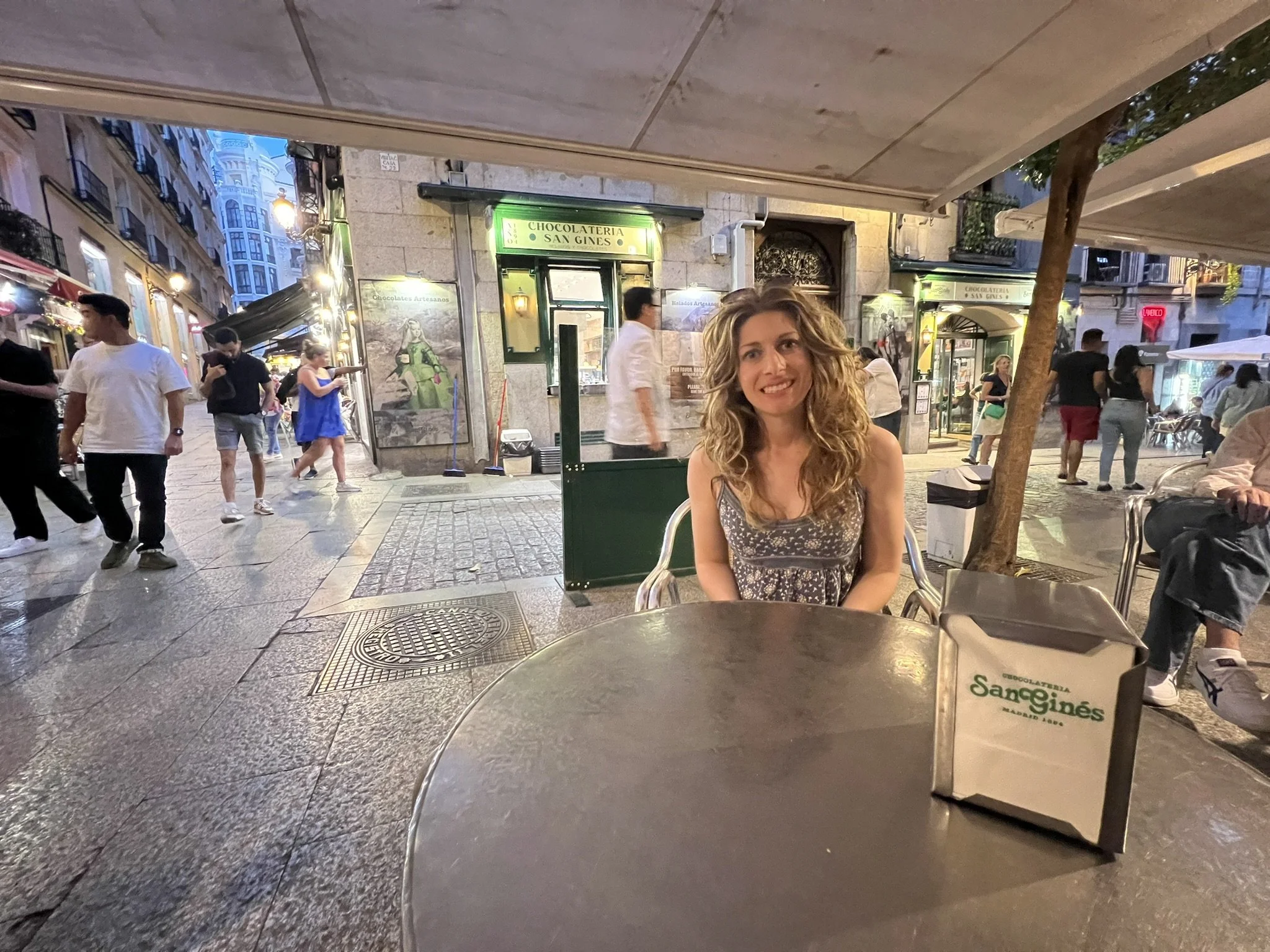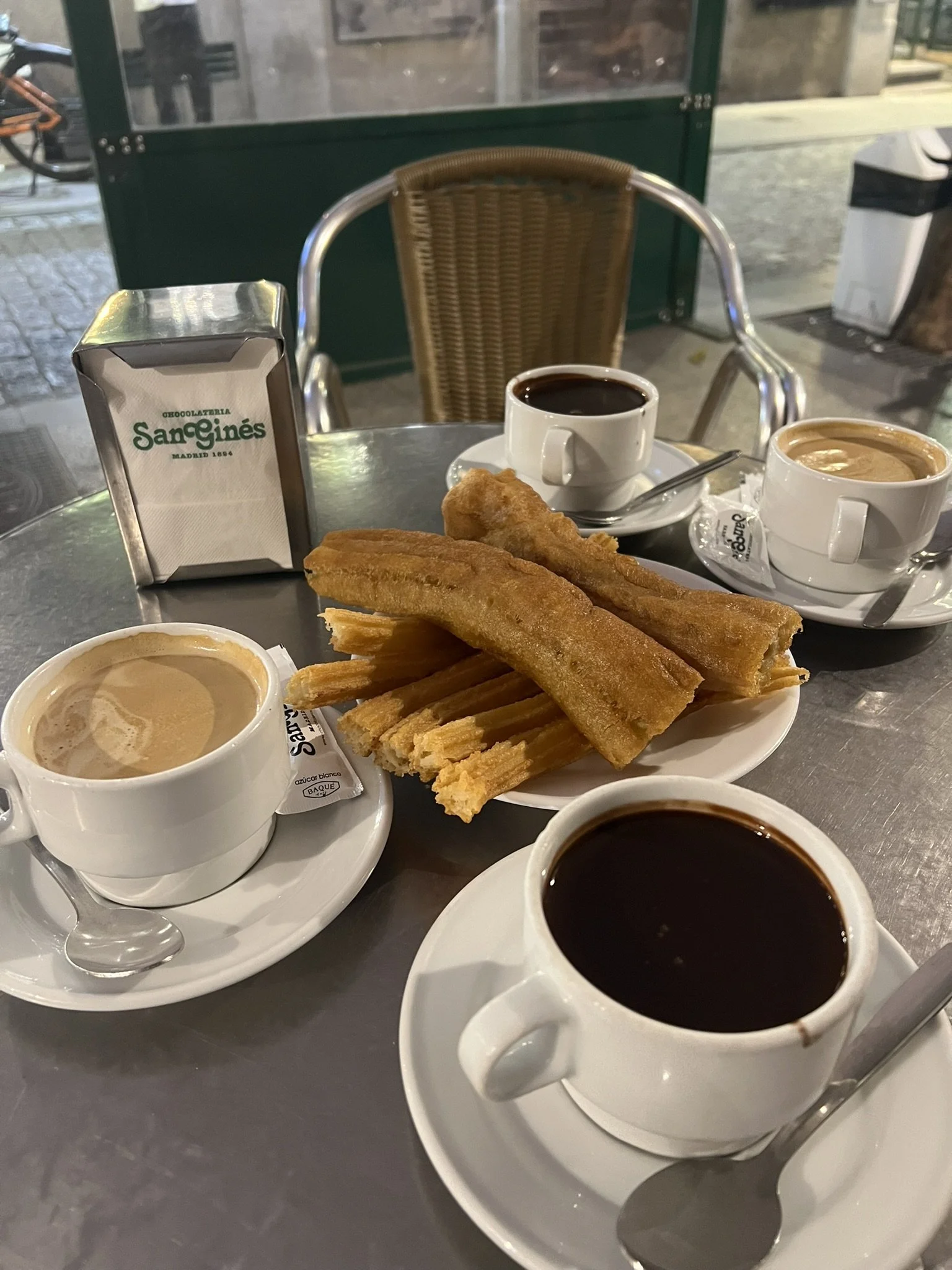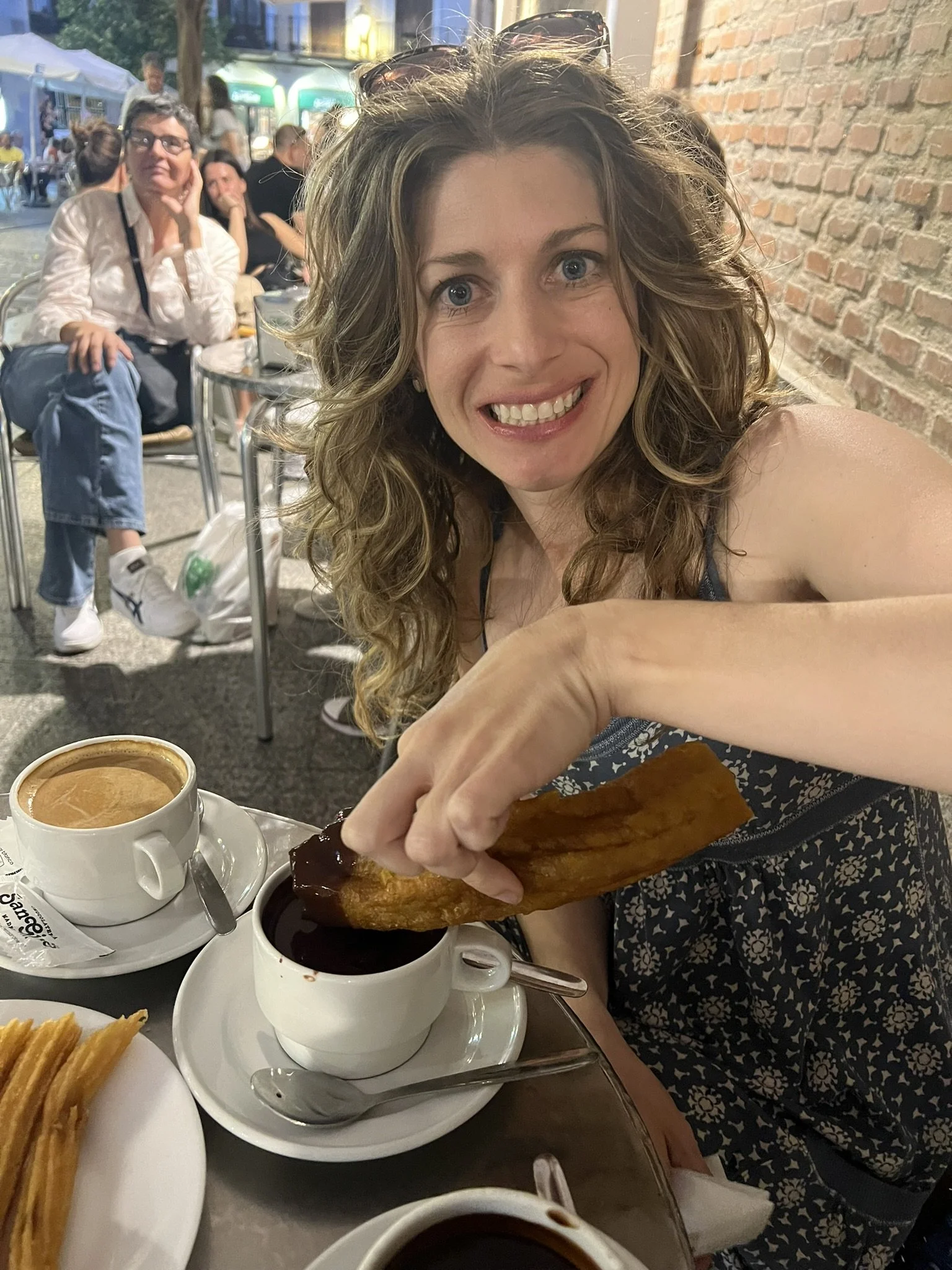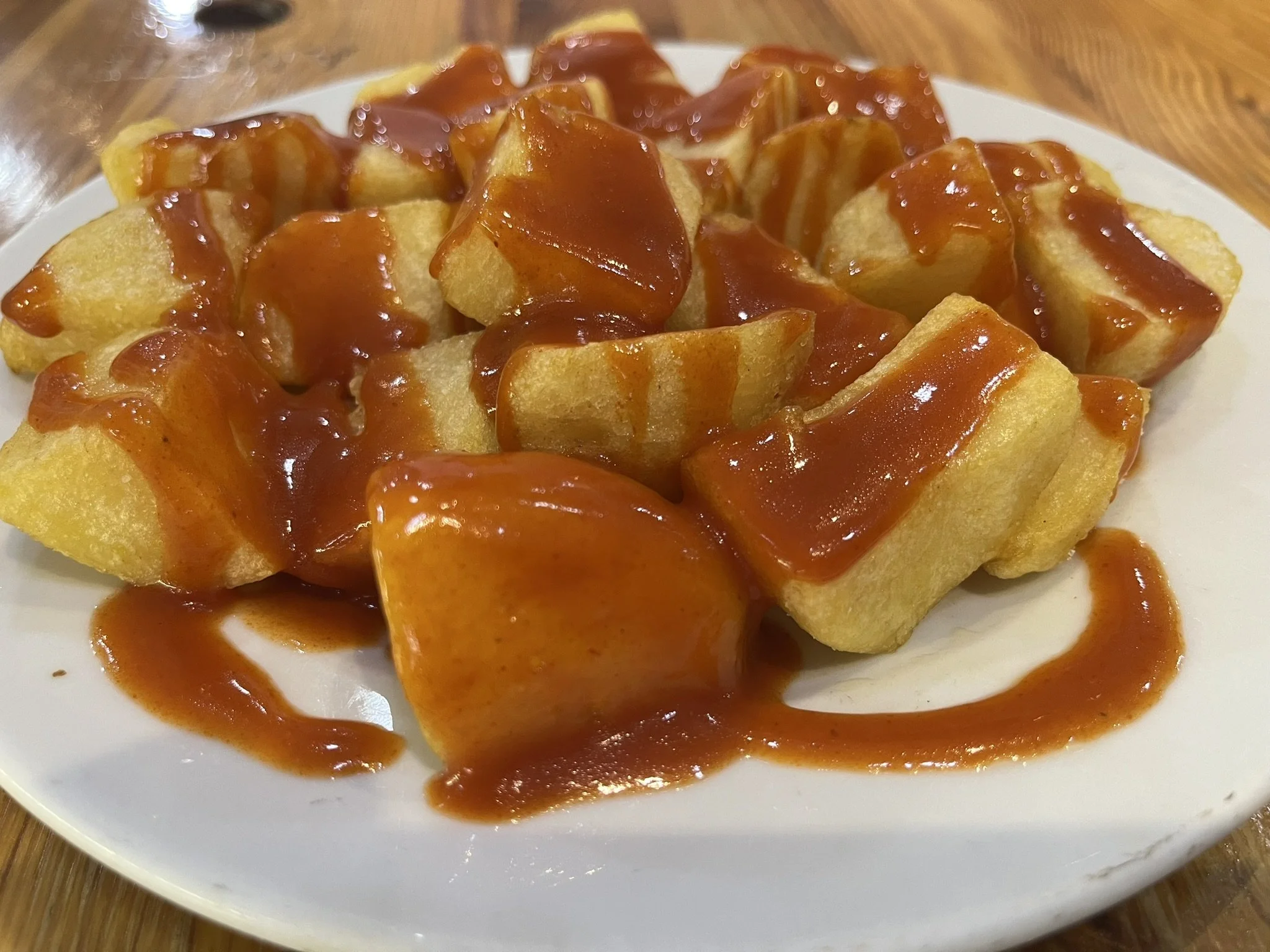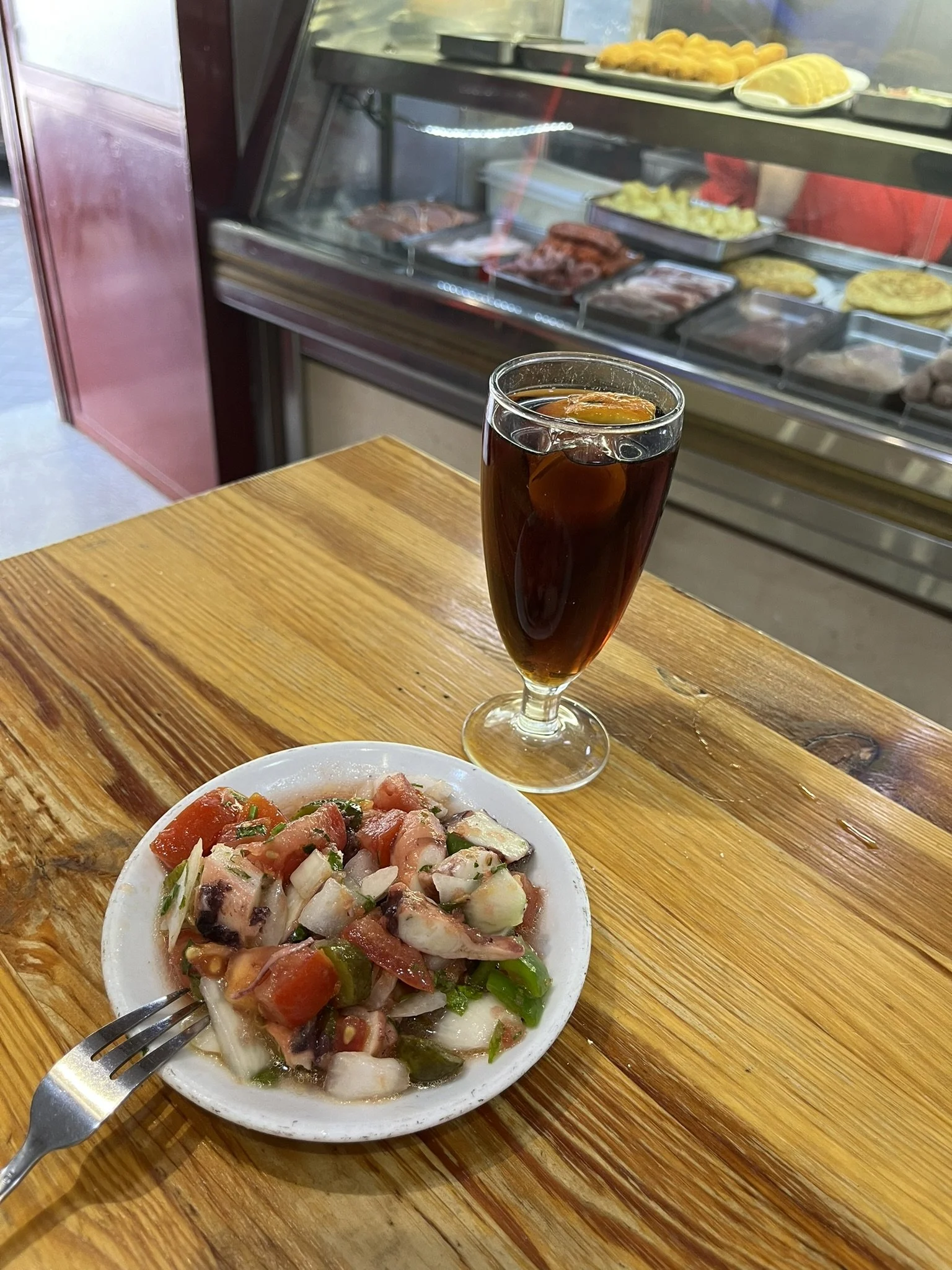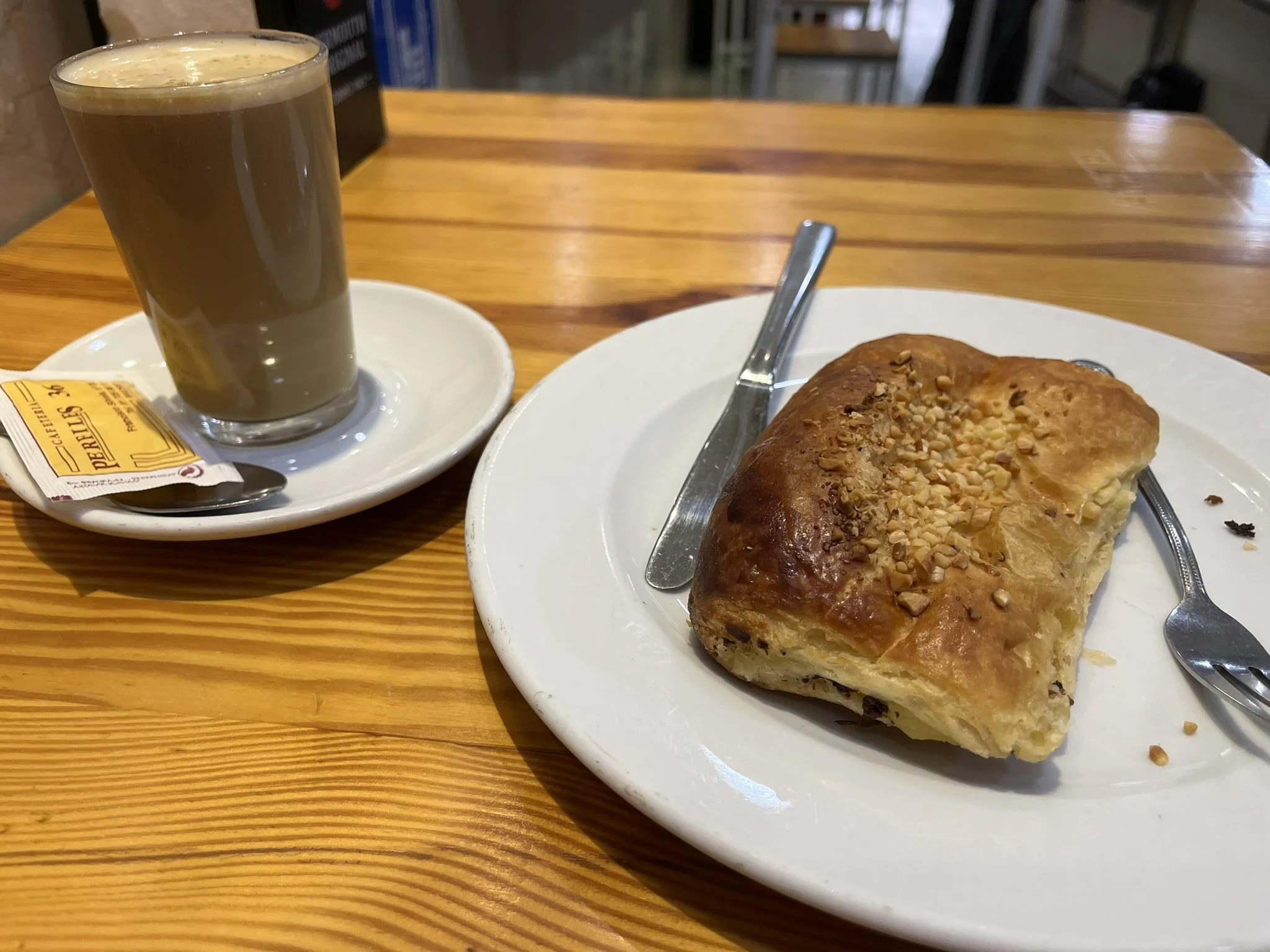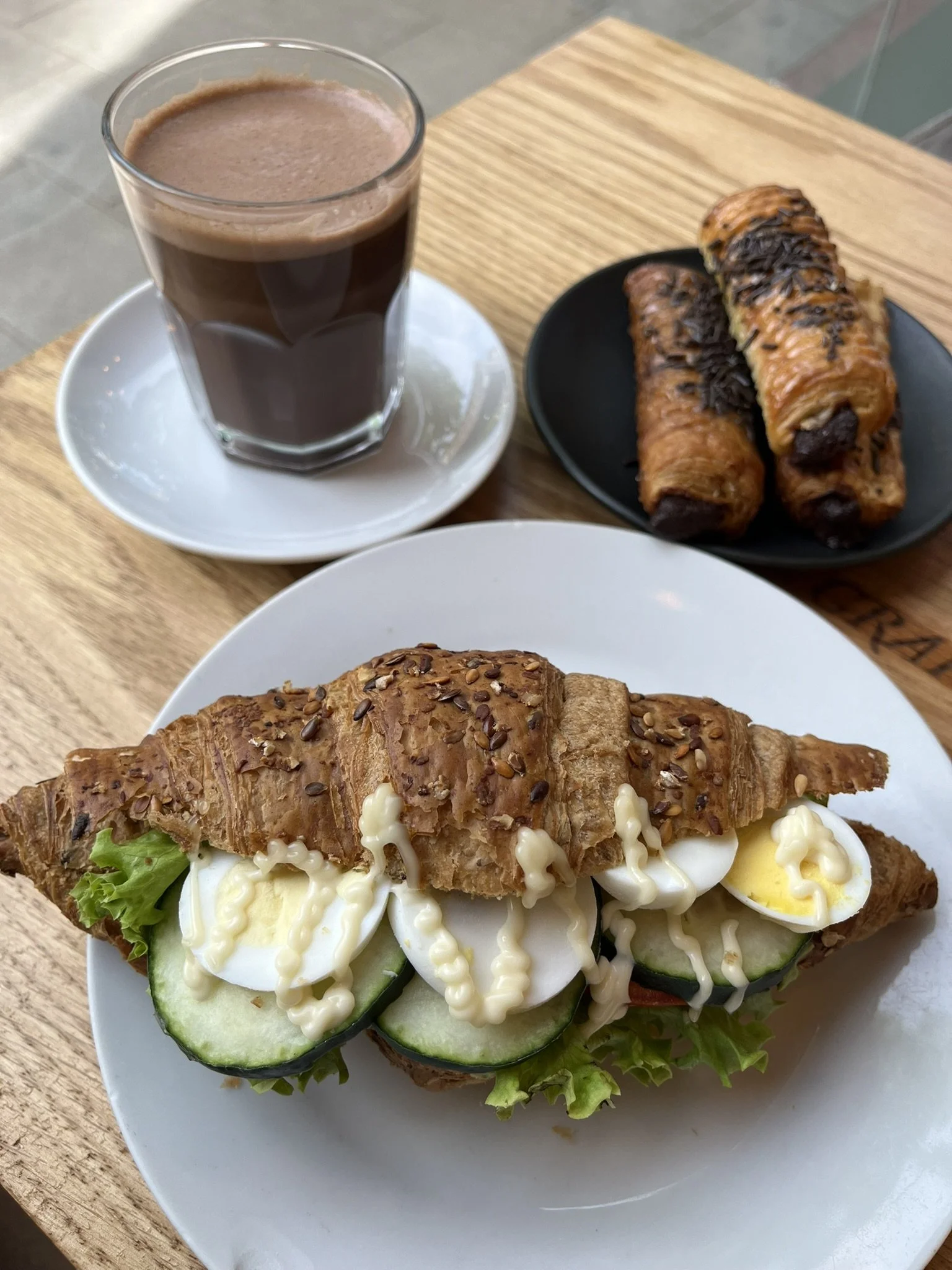Madrid — Food Edition
When we travel, I’m in it for the food. I love street food and small casual establishments because I think that along with local grocery stores gives you a peak into the local fare that’s hard to see otherwise. My other tip is to find out the locals eating schedules and try to adapt to it. We’re all jet-legged anyway so does it really matter if you don’t eat until 9 pm? Just grab a snack to hold you over. The meal-time adjustment is pretty easy and you’ll experience the vibe at peak eating times.
Where Madrid lacks in street food, they more than make up for it with their plethora of tabernas which is similar to a bar and so many bakeries.
The first night we got a couple of empanadas at a stand then found our way into the first of many tabernas. We got a couple of bocadillos which are sandwiches made with a bread similar to French bread with it’s thin crust, but is pretty flavorless. It’s not a bad thing because it allows all of the sandwich insides to shine. We chose butifarra and queso manchego with pimiento frito.
Butifarra is fresh sausage inside of a casing. Each link is shaped like a ball and nearly white in color. The texture was very soft and tender and a mild but distinct in flavor. It is more common in the Catalona region but is still common in Madrid.
The queso manchego with pimiento frito is such a simple concept, but so delicious that I went back the next day and got it for lunch. The pimiento is a long green pepper. I don’t believe it’s the same pimiento that is red and stuffed into olives in the US because those are small and round. This one reminded me of a New Mexico green chile, but without the heat. They fried it but it was more of a pan fried and unbattered so it was soft and picked up the faintest hints browning. The manchego cheese in Madrid just hits different than in the US. They serve it at room temperature so I don’t know how much is determined by cheese temperature v the cheese itself. It seemed, softer and creamier with less sheepiness and a slightly sweeter flavor.
We also had our first vermut which is similar to sangria but made with vermouth. It has deeper and warmer notes than sangria.
On the second night we went to another tarberna. Our neighborhood had probably a dozen of them in a few block radius of where we were staying. We got vermouth and the they gave us a couple of empanadas. We ordered a couple of things that we thought were tapas, but were massive plates of food. We got fries with an assortment of dipping sauces and meat on top. While 8 different sauces seems like overkill, My Armo is a sauce junkie and will always try as many flavors as possible. In this case, I later realized how cool it was because we saw those sauces other places throughout our stay and gives you insight into flavor profiles.
Empanadas for a tapa. Tapas are small bites that come free when you order a drink.
Our gringo selves thought we were ordering a tapa and were confused why the dishes were so large.
We also got a chorizo dish. It was delicious and one of my top dishes of the trip. The sausage was swimming in a liquid that might have been wine based with garlic. I wasn’t able to identify all of the flavors. The chorizo had the perfect texture and a strong flavor (in a good way – sometimes sausages that cook too long in a liquid loses flavor). I ate the leftovers for breakfast and was even better than I remembered.
On night four, our third taberna proved to be another treat. They served us chips with anchovies on top. While it seems a bit weird, the anchovies had plenty of lemon and olive oil flavor and made a good contrast of flavor and texture to the chips. While I always say do as the Romans do (eat), I probably would not have order anchovies because there were so many things I really wanted to try, but I am oh so glad I got them.
Chips with anchovies and Russian Salad.
We also had jamon croquettes. While I knew that was on my list of Spanish foods to try, my research failed in the what it actually is. It’s ham and bechemel sauce that is breaded and fried. When you bite into it, the rich liquid with a subtle ham flavor contrasts perfectly with the crispy batter. I’m still trying to figure out how something that thin can be battered. I’m thinking the bechemel must be chilled to form a ball.
Anyway, we also got a Russian Salad because at this point we’ve basically have eaten flour, potatoes, meat, and cheese for days. It was a mayonnaise based potato, egg, and chicken salad. It tasted just like My Armo’s grandma’s Salad de Beouf. The main difference is she would shape hers into a loaf shape and sliced it with a knife. This one was not shaped and had a lighter and slightly thinner mayonnaise. They also served it with potato chips which might seem a little odd but the dry crunch was a nice contrast to the softness of the salad. Later that night while googling, we found out Russian Salad in Romania is called Salad de Beouf which is where she grew up. Well, we didn’t get the vegetables we were hoping for, but we did get something delicious. For whatever reason, it seemed Russian Salad was on many menus.
My Armo and the taberna owner (also seen in the photo with the Spanish flag).
On the fifth night, at another tabernu, we got mounds of blue cheese (think of the quantity of cream cheese on a bagel in New York). We got the Iberico special which was loads and loads of different meats and cheeses. Each one was distinctly different in flavor and texture. While my Spanish is severely lacking, I could tell the owner was excited about our choice.
While the tabernas had some overlapping menu items, they all had a different spin. This one was all about the cured meats. Check out the wood cutting board and how it thins out in the middle. So much good meat was cut on it!
You better believe My Armo ordered the Iberco special (see two photos up for what’s included). We ate almost all of it and had just a little left over that we had for breakfast.
We also opted for a piece of cake we spotted. It was light in crumb, but dark in color. It had the most glorious citrus flavor with subtle hints of spice and walnuts. It was a single layer with a citrus caramel glaze. I don’t know what kind of cake it was, but keep your eyes open for it.
By this time in the trip we finally cracked the code of tapas by speaking with a local. It is customary for the bar to provide a snack or tapa for every round of drinks. What we ordering were shared plates, but not tapas. There you have it.
One night we grabbed churros and cafe con leche and hot chocolate at San Gines. It’s a 24/7 churro place. You walk inside to place your order and the smell of fried dough and coffee instantly brought me to beignet shops. After you pay, they give you a ticket. You wait in a line outside for a table to open. You hand a server the ticket and they bring you your order within 2 minutes.
There are two kinds of churros. One is thin and crispy and the other one is fat and more doughy. My Armo was in the the fat category and I thought it was a hard decision but leaned towards the crispy ones. Churros are not sweet and are typically eaten with cafe con leche or hot chocolate. We got both so we could try them both ways. What I didn’t realize at the time was this place was all about their chocolate. I had plenty of cafe con leche on this trip and this one was not it. It was more watery than coffee. What I’m saying is go for the chocolate.
The chocolate needs a paragraph of it’s own. Think of the silkiest thing you ever drank, make it silker with the most gloriest chocolate yet smooth flavor you’ve had with the perfect amount of sweetness. We brought bags of it home. When we got home and made it, I was surprised that you only use water to make it and not milk. A lightbulb went off because I remember Christopher Kimball on Milk Street radio saying that he prefers hot chocolate made with water over milk. I get it now. I may have been converted.
I’ll leave you with an assortment of other eats.
Patatas Bravos — It seems that many patatas bravos you find in the US have creamy sauce that goes with it. El Farol, a Spanish restaurant in Santa Fe had more of a chile based sauce and that’s what we had in Madrid. We only ate in once in Madrid so I don’t know which style is more common.
The world has so many versions of empanadas and I think in the US, we often think of them being fried with a flakey crust. In Madrid I noticed it was a mix of fried and baked empanadas. The crust wasn’t flakey and perhaps a tad bit thicker than the flakey versions. I was pleasantly surprised that the empanada dough from the El Farol cookbook is spot on. The recipe is also found in my mushroom and cheese empanada post.
An octopus tapa. Sometimes I have a hard time eating octopus. It has nothing to do with the flavor, but sometimes I have a hard time with the texture of octopus. This dish was delicious. It was bright, acidic, and refreshing. The flavors reminded me of ceviche.
Cafe con Leche with a pastry that had nuts and an apricot filling
I never had a whole grain croissant before. It was buttery, flakey, and light. It had a little bit of a stronger flavor that competed with the butter. I prefer the regular croissant, but still very good. The chai was one of the best I’ve had and rivals the chai at Taos Cow Ice Cream in Arroyo Secco, NM. It’s been a few years since I’ve had it so i can’t say with certainty which is best but they’re definitely in the top two. The pastry in the back was probably my favorite. It was a flakey dough wrapped around chocolate. It was the perfect balance of chocolate to pastry. You could taste the chocolate, but could still enjoy the butter flavor in the pastry.


